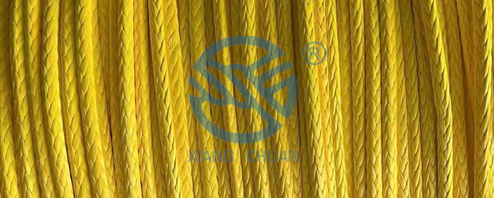vi er industri

When ships need to stay docked at a port, they use mooring lines to secure themselves to the pier. These mooring lines are essential for keeping the ship in place and preventing it from drifting away. Along with the mooring lines, there are also mooring tails which play a crucial role in the process of securing a ship.
Mooring tails are a type of rope or wire that is attached to the mooring line and then wrapped around a bollard or cleat on the pier. These tails help to distribute the load from the mooring line evenly and securely, ensuring that the ship stays safely docked. Mooring tails are typically made from materials such as nylon, polyester, or wire rope, depending on the size and type of ship being secured.
The mechanics of mooring tails are quite simple yet important. When a ship is docked, the mooring lines are first attached to the ship's bollards and then looped around a bollard or cleat on the pier. The mooring tails are then attached to the mooring lines to help distribute the load and provide additional security. The tails are often wrapped several times around the bollard to ensure a tight and secure hold.
One of the key functions of mooring tails is to absorb the shock loads that occur when a ship is exposed to waves, tides, or strong winds. These shock loads can put a significant amount of strain on the mooring lines, which can lead to them snapping or breaking. By using mooring tails, the load is distributed more evenly and reduces the risk of the mooring lines failing.
Another important aspect of mooring tails is their ability to provide additional elasticity to the mooring system. The elasticity of the mooring tails helps to absorb dynamic forces and movements of the ship, which can occur due to external factors such as changing weather conditions or the movement of other ships in the vicinity. This elasticity helps to minimize the strain on the mooring lines and prevent damage to the ship or pier.
In addition to their functional aspects, mooring tails also play a role in ease of handling and maintenance. They are often color-coded or labeled for easy identification and handling, especially in situations where multiple ships are docked at the same pier. This simplifies the process of attaching and detaching the mooring lines, ensuring a smooth and efficient operation.
In conclusion, mooring tails are an essential component of the mooring system for ships. They help to distribute the load from the mooring lines, absorb shock loads, provide elasticity, and facilitate easy handling and maintenance. Understanding the mechanics of mooring tails is crucial for ensuring the safety and security of ships while they are docked at ports.
Adresse:
No.8 Chengnan road, chengnan industripark, Baoying fylke, Jiangsu Kina
E-post:
E-mail1:vanzer@xcrope.com Vanzer Tao
E-mail2:sales@xcrope.com Wang Peng
E-mail3:grace@xcrope.com Grace Li
E-mail4:info@xcrope.com David Cheng
Firmatelefon:
+86-514-88253368
Oversjøisk salgsavdeling:
+86-514-88302931



Copyright av © Jiangsu Xiangchuan Rope Technology Co., Ltd. | Alle rettigheter reservert